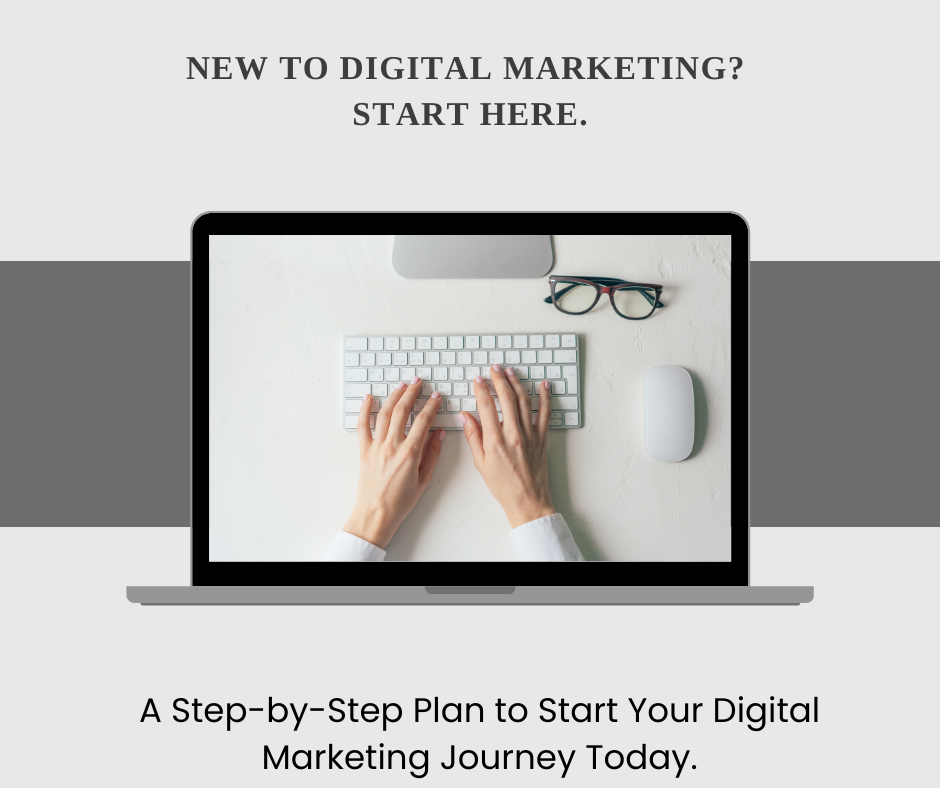Step-by-step digital marketing roadmap for beginners to start learning and practicing online.

Step 1: Learn the Basics with a Free Online Course
Before jumping into tools or creating websites, it’s important to understand what digital marketing actually is. Not just the definition, but the structure—the branches, the purpose, the potential career paths, and how all the parts work together.
The good news? You don’t need to pay for this. There are excellent free courses created by top platforms and companies that give you a solid foundation.
Your Goal for Step 1:
-
Understand the core areas of digital marketing (SEO, content, social media, email, paid ads, analytics, etc.)
-
Get familiar with digital marketing tools and terminology
-
Learn about the real career options: freelance, agency, remote job, business owner, etc.
Recommended Free Courses (Start with ONE):
-
Google Digital Garage – “Fundamentals of Digital Marketing” (Free certificate)
Link: https://learndigital.withgoogle.com -
HubSpot Academy – Free digital marketing and content courses
[Link: https://academy.hubspot.com] -
Coursera – Digital marketing courses from top universities
[Link: https://www.coursera.org] -
Meta Blueprint – Great if you’re interested in Facebook/Instagram marketing
[Link: https://www.facebook.com/business/learn]
Tip
-
Google Ads
-
WordPress / Wix
-
Mailchimp / ConvertKit
-
Canva
-
SEMrush / Ubersuggest
-
Google Analytics
Step 2: Create a Social Media Page to Establish Your Online Presence
Now that you’ve gained a foundational understanding of digital marketing, it’s time to build your first online presence. The best way to start engaging with your audience and putting your skills into practice is by creating a social media page. This will help you learn how to grow and engage an audience on platforms like Instagram or Facebook, two of the most popular and powerful channels for marketing today.
Your Goal for Step 2:
-
Create and set up a business profile on a social media platform (Instagram or Facebook).
-
Learn how to post engaging content that resonates with your audience.
-
Understand social media tools and insights to measure engagement and growth.
Why Choose Instagram or Facebook?
-
Instagram is fantastic for visual-based marketing, making it ideal for businesses in lifestyle, fashion, beauty, fitness, food, and travel. It’s a highly interactive platform with great tools for businesses to reach their audience and grow organically.
-
Facebook is still one of the biggest platforms globally, offering an ideal place to build a community, share long-form content, and run ads. It’s a versatile platform that can be used for any niche.
Both of these platforms have free tools that help businesses track growth and engagement, making them great starting points for beginners.
Step-by-Step Guide to Creating Your Social Media Page
-
Choose Your Platform:
-
Instagram: Create a professional account through the app. If you already have a personal account, you can switch it to a business account in settings.
-
Facebook: Set up a business page (not just a profile) through your Facebook account.
-
-
Pick a Niche:
Based on your interests and what you’ve learned so far in the course, pick a niche. This could be anything from fitness tips to digital marketing advice—whatever excites you. -
Optimize Your Profile:
-
Add a clear profile picture that represents your brand (business logo or relevant photo).
-
Write a compelling bio that tells your audience exactly what you offer and why they should follow you.
-
Include a call to action (CTA): Something like “Follow for daily digital marketing tips” or “Get your free SEO guide by clicking the link below.”
-
-
Create Your First Post:
-
For Instagram: Start with a simple introductory post or a carousel explaining who you are and what your page is about.
-
For Facebook: Write a brief post introducing yourself and your mission, and encourage people to follow your page for valuable content.
-
-
Engage and Connect:
-
Start following other accounts in your niche and engage with their posts. Leave thoughtful comments, like posts, and share content that resonates with you. This will help you get noticed and understand what kinds of posts are popular in your industry.
-
What You’ll Learn from This Step:
-
Content Creation: You’ll practice creating content that resonates with people and helps you build a community.
-
Engagement: Social media is all about two-way communication. You’ll learn how to respond to comments, direct messages, and engage in conversations.
-
Branding: Your social media page is your first step in branding. You’ll start to understand what your audience expects from you, what tone to use, and how to stay consistent with your messaging.
-
Social Media Insights: Both Facebook and Instagram offer insights into how your posts are performing. You’ll see how many people are liking, commenting, and sharing your content. This helps you learn what works and what doesn’t in real time.
Tips for Success:
-
Post Consistently: Start with 3–5 posts per week. Don’t worry if it’s not perfect—focus on delivering value, and over time, your content will improve.
-
Use Hashtags: On Instagram, hashtags are key to discoverability. Research trending or relevant hashtags for your niche and use them in your posts.
-
Don’t Forget Stories: Use Instagram or Facebook stories to stay top-of-mind with your audience. It’s a great way to share quick updates, polls, and behind-the-scenes content.
Tools You’ll Use:
-
Instagram Insights or Facebook Insights: Track your page’s growth, audience demographics, and engagement metrics.
-
Canva: Design beautiful posts, stories, and graphics to make your page look professional (free plan available).
-
Later or Buffer: Schedule posts ahead of time to stay consistent with your content.